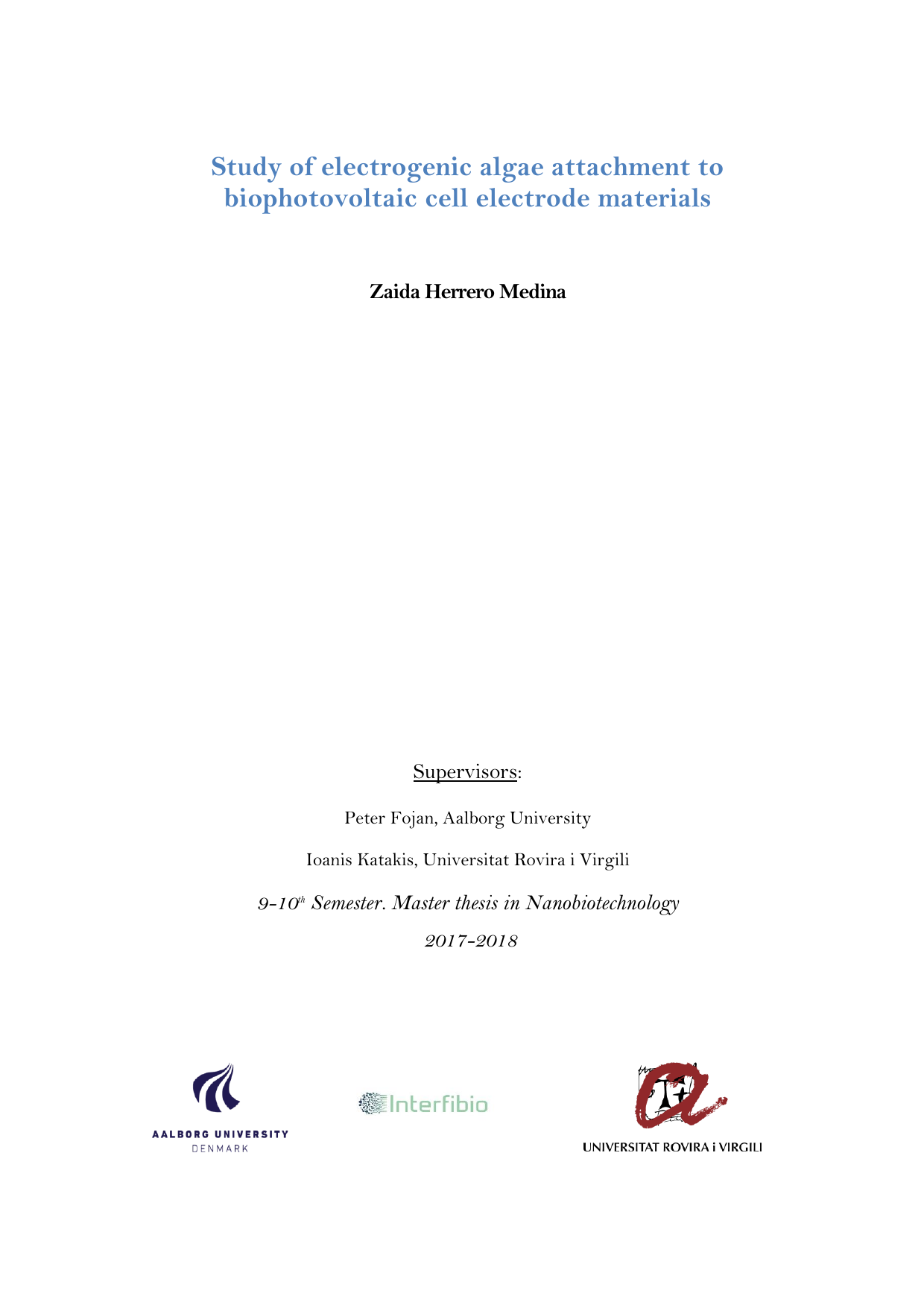
Study of electrogenic algae attachment to biophotovoltaic cell electrode materials
Author
Term
4. term
Education
Publication year
2018
Submitted on
2018-06-01
Pages
66
Abstract
Biophotovoltaic cells use photoautrophic microorganisms capable of harnessing solar light that generate power from the harvesting of electrons during the photosynthesis process. The aim of this project was to survey different electrode materials to efficiently immobilized the microalgae Scenedesmus sp. and the cyanobacteria Synechocystis PCC6803 to improve current generation. The surfaces of gold and glassy carbon electrodes were modified with different surface modification techniques. The best immobilization method was the crosslinking of Polyethilenimine (PEI) with Poly (ethylene glycol)(200) diglycidyl ether (PEDGE) which formed an hydrogel that achieved high photosynthetic microorganism immobilization. The immobilized cells were electrochemically and microscopically characterized. Although no direct electron transfer was observed for Synechocystis, both photosynthetic microorganisms achieved current generation of ca. 10μA/cm2 by mediated electron transfer.
Keywords
Documents
